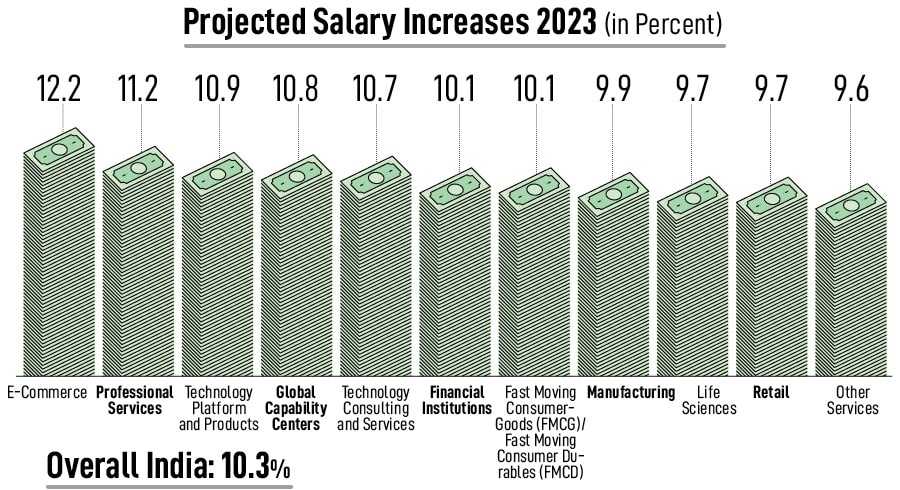
Salaries in India expected to increase by 10.3 percent in 2023: Aon Survey
Though slightly lower than last year's 10.6 percent, the projected hike continues to be in double digits despite concerns about economic volatility
 The non-merit salary increase projections continue to be moving up as firms’ budget for retaining talent goes up through promotions and off-cycle corrections
The non-merit salary increase projections continue to be moving up as firms’ budget for retaining talent goes up through promotions and off-cycle corrections
Salaries in India are expected to increase by 10.3 percent in 2023 compared to an actual increase of 10.6 percent in 2022. Although slightly lower than last year, the projected increase continues to be in double digits despite concerns about economic volatility. At 21.4 percent, the attrition rate in India for 2022 remained high. According to global professional services firm Aon, this is a consequence of an ever-changing talent strategy, and the ongoing gap between supply and demand of talent.
Aon’s latest ‘Salary increase survey’ suggests that rising inflation and persistent attrition continue to be key concerns for organisations, and contribute towards high salary increases. “The ‘great resignation’ has been followed by the trend of ‘quiet quitting’. A considerable proportion of employees are disengaged. Organisations are therefore facing a challenge in not only retaining talent, but also driving productivity from existing employees,” explains Roopank Chaudhary, partner, Human Capital Solutions, India at Aon.
The current trend mirrors the last such phase of high attrition seen in 2011 where attrition stood at 19.8 percent.
The study also suggests that there is no imminent recession in India, but growth is moderating. The fundamentals of the economy remain strong with 50 percent companies anticipating over 10 percent business growth. Also, the number of companies reporting a business decline has come down.
Almost one-fourth of the total salary increase of 10.6 percent is ring-fenced for non-merit increases. The survey further reveals that while the merit increase projections—increase based on individual performance—stays steady at 7.8 percent, the non-merit salary increase projections—increases on top of merit increase, such as market corrections, special adjustments and promotions—is expected to moderate to 2.8 percent, which is higher than the historical average. This is particularly noteworthy at junior levels where the non-merit increase projections are as high as 3.3 percent.









